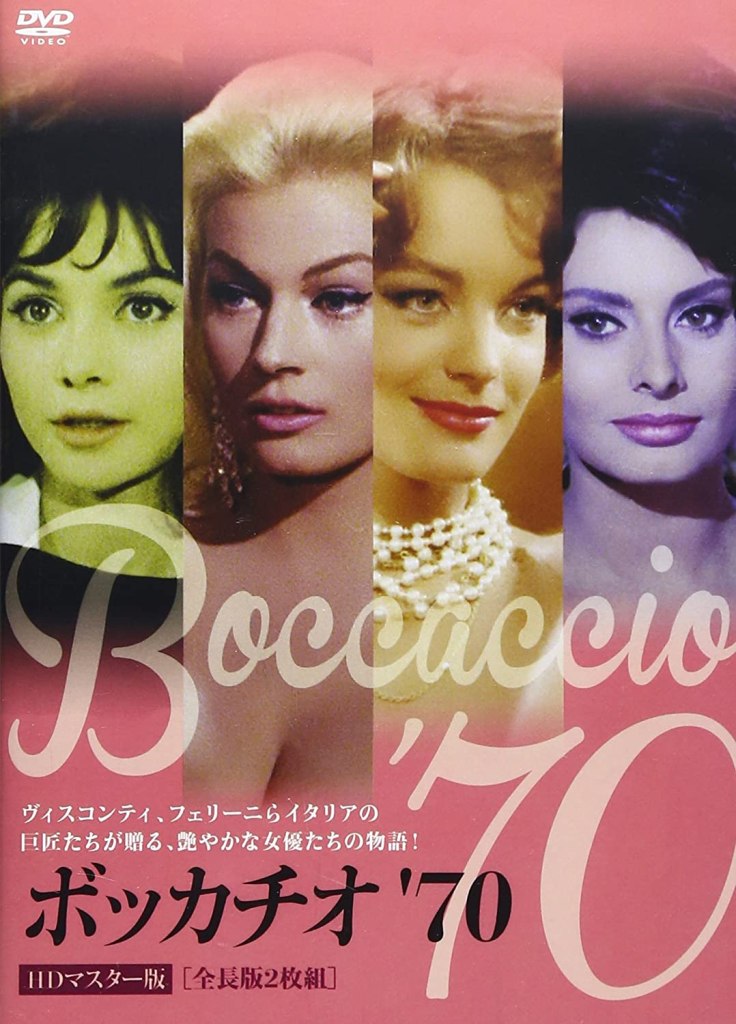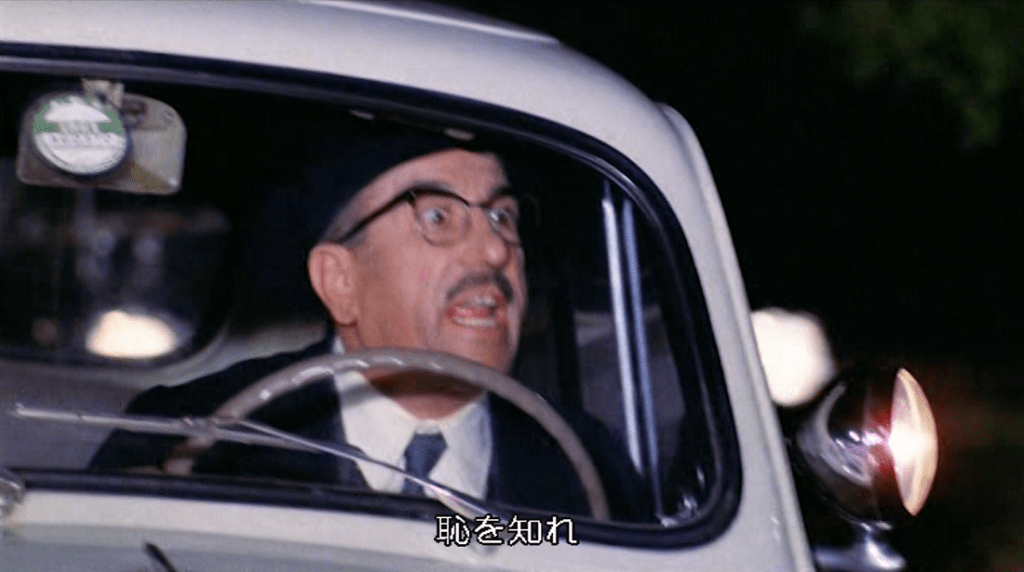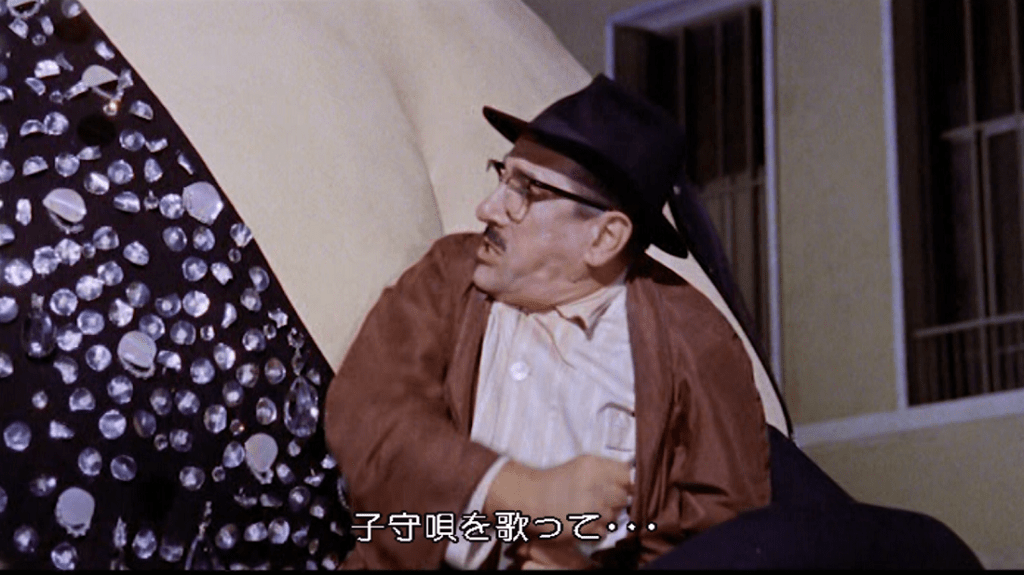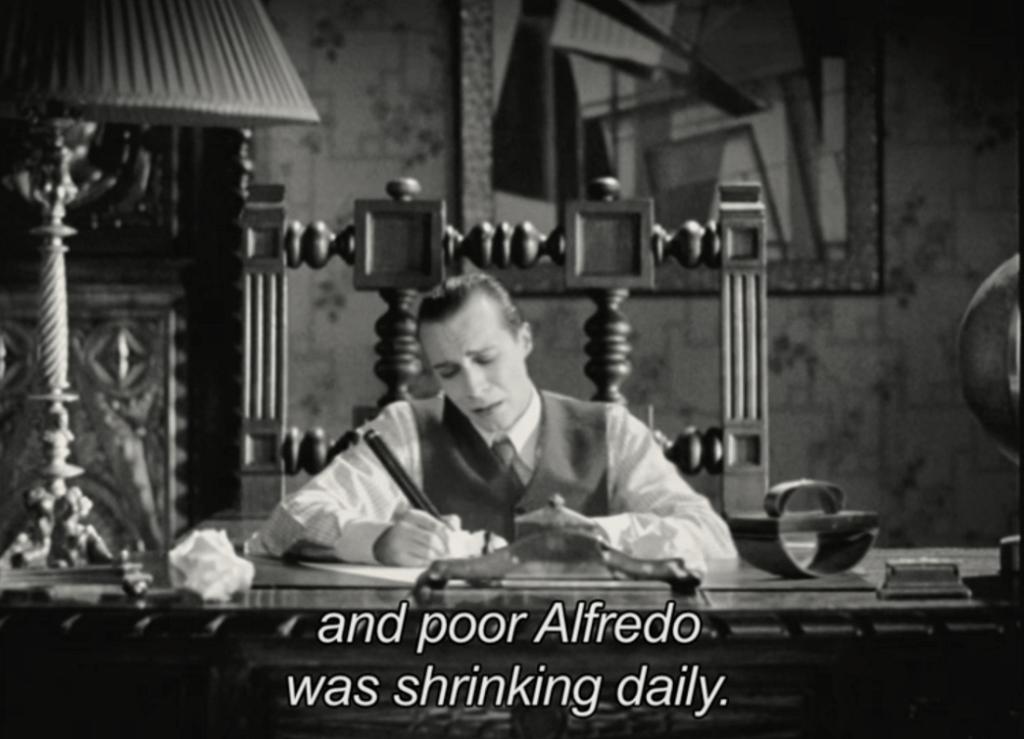
Good morning everyone,
It has been awhile, over a year, since There She Grows did one of these mainstream fare reviews. Mainstream fare in this instance meaning movies and TV episodes intended for broad audiences which include size themes, such as giant women or tiny men. So sit back, relax, and travel with Solo on an Euro trip!
That’s right, we’re examining mainstream fare produced on the European continent. Furthermore, the two full-length films and the one short film come from a subset of western Europe. Today we’re dipping our toes into content made in Romance languages, specifically in French, Italian, and Spanish! Of note, Mrs. Solo can confirm that Solo is well-versed in the languages of romance 😎
(SIDE NOTE: For those looking for additional European content may I humbly suggest older reviews such as Livy and Divy or the 19th century unification of Germany? Please forward any other suggestions my way.)
Readers may question my qualifications to discuss European media, but fear not gentle readers!

Having frequented fine dining establishments such as FEBO in the Netherlands and having munched on vending machine croissants in Verdun, France, I am eminently qualified to discuss the finer points of culture, or as they say in France “culture.”
So, let’s get started with the 1962 Italian film Boccaccio ’70. This is an anthology centered on the physical and romantic relationships between men and women. Of note, the segments are longer (around 50 minutes) than what contemporary moviegoers might expect. Altogether, the complete anthology runs for more than 3 hours. Outside of Italy this was initially released with only three of the four original stories. Those three being “The Job” starring Romy Schneider and directed by Luchino Visconti, “The Raffle” starring Sophia Loren and directed by Vittorio DeSica, and “The Temptation of Dr. Antonio” starring Anita Ekberg and directed by Federico Fellini.

The missing segment from the initial foreign release was “Renzo and Luciana” starring Marisa Solinas and directed by Mario Monicelli. However, the complete anthology is now available on Blu-Ray and DVD. For instance, the following DVD release includes all four segments with Italian audio and Japanese subtitles.

Only The Temptation of Dr. Antonio starring Anita Ekberg is of interest today. The titular Dr. Antonio is a prude who disapproves of any display of sexuality. A ha! As an American, it’s a relief to learn that it’s not just the good ole U.S.A. which must deal with uptight killjoys trying to force puritanical values on the rest of society. Refreshing to see that other countries must also deal with such pricks.

Dr. Antonio spends his free time as a self-appointed defender of Rome’s purity. That’s not what he literally calls himself, but he does drive through “lovers’ lane” in the middle of the night shaming people. Obviously, the couples were never shown naked and no actual intercourse was depicted, but the implications were quite clear. Alternatively, it could have merely been men and women going to a secluded park to sleep next to each other in a car, but I have serious doubts about that interpretation.


In keeping with his repressed nature, Dr. Antonio also becomes enraged at a woman showing cleavage at a restaurant. He tries to cover her décolletage (We try to be fancy at There She Grows. Note the accent mark, that means fancy 😉 ), and his over-the-top response prompts her to leave.
Dr. Antonio’s life is turned upside down when a billboard is set-up in an empty lot across from his apartment.

The billboard features Anita Ekberg lounging on a couch and encouraging people to drink more milk (Bevete più latte). The existence of a public sign featuring the voluptuous blue-eyed Swedish blonde compels Dr. Antonio to attempt increasingly desperate schemes to remove it. Anita’s sign begins to affect his sanity and he imagines her taunting him in real life.

Eventually, an enormous Anita jumps into reality on a rainy night. She chases Dr. Antonio around the empty streets at midnight. The giantess teases him and even changes her size, giant to normal-size then back to giant again.



I won’t give away the ending. Sufficient to say that the doctor would have been better off if he had embraced life instead of trying to ruin everyone else’s fun. If only giantesses would appear in the U.S.A. and deal with American prudes! They could start in Florida.

Next up, let’s examine a 2012 French short film called O.V.N.I. O.V.N.I. typically stands for “Objet Volant Non Identifié,” meaning an Unidentified Flying Object or UFO. However, in this instance O.V.N.I. stood for “Objet Video Non Identifié,” an Unidentified Filmed Object.

This is a short 6-minute long movie made by the Niquet brothers, Guillaume and Geoffrey Niquet, and produced by Daisy Day Films. The brothers have worked on a number of films in a wide range of roles ranging from actor to costume designer to director to screenwriter. To give one example, Guillaume Niquest did the special effects for “April 4th 1968.”
O.V.N.I. stars Sheila O’Connor as Marianne. Sheila O’Connor has performed as an actress in several French films and also is credited as a director and screenwriter for a few others. I was unfamiliar with Sheila O’Connor, but perhaps she has some measure of fame in France itself.
Marianne is a woman walking around town and being annoyed by other pedestrians. She is a stuck-up lady disapproving of everyone she encounters. One worries if the poor actress pulled a muscle sticking her nose up so high into the air. That’s not a criticism, merely an observation.

Eventually, Marianne’s frustration boils over and she grows, presumably due to unseen alien intervention. Although, the reason for her transformation was not as clear-cut as a UFO zapping her with a growth ray. Instead, she seemed to grow simply because she wanted to. This was not a adult-oriented production so her clothing stayed firmly intact, and there was no on-screen transformation from normal-size unpleasant person to gigantic-size unpleasant person.
A joke was made about a Japanese person filming the town and referencing Godzilla when he sees the gigantic Marianne. That’s an old joke! Airplane 2 already made the “Japanese people made Godzilla” reference way back in the early 1980s. Maybe that highly-refined humor took thirty years to cross the Atlantic. I would have been more impressed if the Japanese tourist had referenced Daimajin. Daimajin is at least humanoid and thus more apropos.

Marianne crushes a fellow in his car, steps on a few other people, and kicks a mime high into the air. Her violence was motivated by a hatred of humanity in general. She did not crush the guitarist who sang (perhaps more accurately he yelled) “sicko” at her repeatedly.
(SIDE NOTE: I love the way “guitar” sounds in French. It’s different, but just as good as how Justin Hawkins pronounces “guitar” before the guitar solo in “I Believe In A Thing Called Love” by The Darkness.)
If she would have attacked the guitarist then there would have at least been a reason behind her actions. The dude was pestering her so she could have responded with over-the-top violence. Instead, she was just misanthropic, disliking people as a whole.

Eventually, two aliens transport Marianne up to their vessel and cart her off to outer space. (SIDE NOTE: There’s a brief interview with one of those aliens on YouTube which can be viewed by clicking here.)
The special effects (SFX) were okay. The story was a whole lot of nothing, but given the minimal runtime that was unsurprising. By the way, after beaming the giantess up, it took the UFO well over half a minute to disappear into the cosmos. That extended scene felt like padding. Ergo, the Niquet brothers presumably had to achieve a specific runtime so they held on this shot of the space ship lifting up into the sky.

Lastly, we’ll examine the 2002 Spanish film Talk to Her. This is an unusual tale of two men who form an unlikely friendship. Both of them care for beautiful women in comas. One of the men, Marco Zuluaga, is a journalist and writer of travel guides. Marco was close to female bullfighter Lydia González, who was severely injured during a bull fight. The other is Benigno Martín, a lonely man who grew up without his father and was forced to care for his mother’s every need at a young age. Benigno becomes infatuated with a lovely ballerina named Alicia Roncero. After Alicia was struck by a car and fell into a coma, Benigno was assigned as one of the nurses overseeing her care in the hospital.
Benigno is the type of man who modern audiences would classify as an “incel,” or an involuntary celibate. As such he is awkward around women and is a virgin. He also makes overly broad statements about how women behave and think. He speaks as if women were monolithic, each acting exactly like every other woman. A female nurse likes Benigno and they could have had a romantic relationship if only Benigno hadn’t been obsessed with the comatose Alicia. So, there was an element of tragedy. I’ll return to this point soon, but for now let’s examine how a shrunken man was included in this seemingly unrelated movie.
Alicia had expressed a love for silent films during a brief encounter with Benigno before her accident. Accordingly, Benigno goes to the cinéma and talks to the now-comatose Alicia about one of those silent films. Viewers see a black and white recreation of the film he is describing. In that bit, a female scientist develops a formula which inadvertently causes her male acquaintance to shrink.

The acquaintance, presumably her boyfriend or husband, begins to shrink more and more every day. Eventually, he is less than a foot in height. One night the female scientist (played by Alicia) goes to sleep with Alfredo (played by Benigno) in her bed.

Benigno climbs over her body, beginning with her breasts.

Next, he appears between her legs. There he stimulates her before fully entering her womanhood, never to return again. Obviously, shrunken men (SM) and unbirthing fans should enjoy that bit. They can find the scene online.
However, to return to my earlier point, it’s important to note that Talk To Her raises an important question. Namely, what would you do if a friend committed a horrible crime? Would you continue to support them? That’s a difficult thing to imagine. It’s one thing to maintain ties with a friend who is unjustly accused of a crime that they did not commit. It’s another thing to maintain ties when they committed the crime and acknowledge their wrongdoing.
How do you support that friend without approving of their actions? Undoubtedly, this happens everyday when someone is rightly sent to jail. Yet, I have rarely seen it on the silver screen. That’s not to claim that Talk To Her explored this issue in great depth, but it at least broached the subject.
This is difficult to discuss without spoiling; however, it feels necessary to note that the crime in question was rape. A person has sex with a comatose woman unable to consent. There are more than likely enough clues given already to connect the dots so I’ve spoiled things. Nonetheless, I do want readers to be aware that while I recommend Talk To Her it does deal with subjects that some viewers may find unpleasant. That’s where the description of this work will end.
Overall, Boccaccio ’70’s The Temptation of Dr. Antonio is a recommended watch and was the best of this trio. Following that is Talk To Her, with the caveat that it does deal with challenging subjects. Lastly, O.V.N.I. is not worth watching. It wasn’t bad per se and it didn’t offend my sensibilities, but there wasn’t enough to recommend. It was meant to be a comedic sketch, but there wasn’t enough meat on the bones.
That’s it for now folks. The next review will cover local fare. Local meaning something made in Japan. So, come back this Friday to read about Yui-chan’s Lover. (The predecessor to Kaho-chan’s Lover.) Until then, keep growing!
This review was written by SolomonG and is protected under Fair Use copyright law.
All Rights Reserved.

Thank you for these reviews. Im not happy with the size shifting scenes from Ant-Man and the wasp quantumania. No sense of scale or excitement. I wish the CGI, writing and stature’s performance had been better.
LikeLiked by 1 person
Regarding Quantumania, I can certainly sympathize. On the one hand, I enjoyed the creativity used to make the Quantum realm. On the other hand, the execution of the story and the size scenes could have been better.
I was amused when Ant-Man’s daughter criticized him for not being more active and fighting for positive change. It’s great to encourage others to make the world a little better. We should each do our part. However, in the context of the Marvel cinematic universe, it felt weird to criticize a guy who was on the super-hero team, the Avengers, responsible for bringing back to life billions of people on Earth. Furthermore, the Avengers brought back 50% of the population of not just Earth, but the entire universe. How many sentient beings exist in the Marvel universe? I don’t know. There are billions just on our planet. I’m guessing there are trillions if not quadrillions of aliens (Chitauri, Kree, Skrulls, Xandarians, etc.) whose lives Ant-Man helped save. With that accomplishment in his past, he could spend the rest of his days watching cute cat videos and picking lint out of his belly button and still call his life a win!
I also loved M.O.D.O.K. in the comics, but he looked particularly fake in the movie. He’s not an easy character to adapt to be fair.
LikeLiked by 1 person
I remain preoccupied by the few instances of mainstream size content that—knowingly or unknowingly—seem to acknowledge that it’s valid to have sexual feelings about size-differential that aren’t rooted in a comedy or horror sense. We expect a fetish-driven work to endorse size thirst (we perhaps expect it to a cringey degree), but when a multi-million-dollar production with world-famous names attached depicts size-differential and invites the audience to see it in a sexual light, I feel a tiny frisson of hope that the Good Word will spread to a few more isolated size pervs out there and prompt them to connect with others. I get no such feeling from a fetish-based work, no matter how well-executed.
In 1958, Attack of the Fifty-Foot Woman introduced mainstream audiences to the notion that a giantess is something to be feared and avoided. Four years later, Boccaccio ’70 presented a 50-foot Anita Ekberg in a very low-cut dress as something every red-blooded man should desire and ridiculed the Dr. Antonio character as an immature prude. As comical a figure as Dr. Antonio is, there’s nothing comical about Ekberg’s sex appeal, even as a giantess. I see this as straight-up validation for size fantasy, at least in the F/m sense.
It’s hard to discern what *Les Frères Niquet* were trying to say, if anything, with O.V.N.I. I think it’s a reasonable interpretation that they wanted to show Marianne as legitimately harried by the people she encountered on her Parisian stroll. Given that premise, the short film is a pretty good representation of the size-fantasy trope Wronged Woman Gets Big And Gets Even, although there’s no attempt to portray this as sexually arousing in any sense. I’m a little bemused by the suggested trope of a corps of flying saucers tasked with rounding up wayward giantesses.
Pedro Almodóvar has a well-earned reputation for making films that deftly mix the ridiculous with the sublime, and Talk To Her is no exception. The black-and-white film-within-a-film, *Amante Menguante” (“Waning Lover” or “Diminishing Lover”), bears a heavy responsibility in the primary narrative as a metaphor for a severe transgression committed by one of the characters. This transgression is so shocking that Almodóvar blunts its impact by using the depiction of the events of the absurdly risqué silent movie to imply what has happened in the primary narrative. Once it later becomes clear what has actually happened, viewers are properly shocked and pass judgment on the transgressing character. However, Almodóvar subverts this judgment by first inviting viewers to enjoy the erotic elements of “Amante Menguante,” making the viewers complicit in the mindset of the transgressor.
Almodóvar previously hinted at F/m size fantasy in Tie Me Up! Tie Me Down! where Victoria Abril’s character takes a bath and lets a bathtoy shaped like a scuba-diver paddle between her legs and press up against her crotch (at the Berlin Film Festival premiere the studio handed out scuba-diver bathtoys as promotional items). Complicating theories that Almodóvar might be “one of us” is the fact that he is gay and was famously devoted to his late mother.
The only other mainstream film that I’m aware of that presents size-fantasy in a sexy (non-comic, non-horrific) context to degree comparable to that of Boccaccio ’70 and Talk To Her is the 1987 Polish film Kingsize. It deserves to be in this series.
LikeLiked by 1 person
Here’s hoping that the “Good Word” will indeed spread and reach isolated size pervs. Boccaccio ’70 certainly validated F/m size fantasy as a legitimate and understandable desire. What red-blooded man (or woman) wouldn’t want to cavort with an enormous Anita Ekberg? If only modern productions were willing to explore the possibilities! Recent examples lack seduction and provide only clumsy action and low-effort humor. Looking at you Attack of the 50 Foot Camgirl!
I’ll add Kingsize to the next mainstream fare review.
LikeLiked by 1 person
https://www.hollywoodreporter.com/movies/movie-news/bert-i-gordon-dead-director-cult-cheap-sci-fi-classics-1235346478/
Bert I. Gordon died. I always enjoyed his movies even when MST3K wasn’t skewering them…
His size content inspired many other stories & content creators.
LikeLiked by 1 person
R.I.P. Bert I. Gordon. He gave the world a lot of sizey goodness!
I ordered a copy of his biography and hope it provides some unique insight into his classics The Amazing Colossal Man, Attack of the Puppet People, and Village of the Giants.
LikeLiked by 1 person